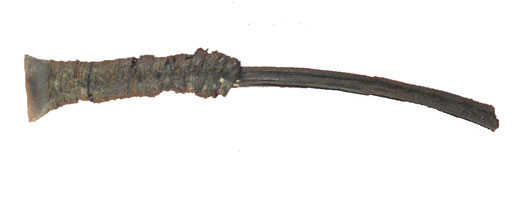The transverse arrowheads of the Stone Age
Some of the most well-known flint objects from the Stone Age are arrowheads. They can be found all over Denmark, in places where the Stone Age hunters missed their targets. These have then been discovered thousands of years later; the arrowheads of flint are well preserved, whereas the wooden arrow shafts have decomposed. The so-called transverse flint arrowheads are shaped so that they have a very broad cutting edge. This is useful when hunting large prey. The broad cutting edge causes severe injuries to the animals, that bleed to death relatively quickly and are unable to move far away from the hunter. Arrowheads are sometimes found which have been exposed to heat. Apparently these have remained lodged in the body of the animal when it was cooked.

